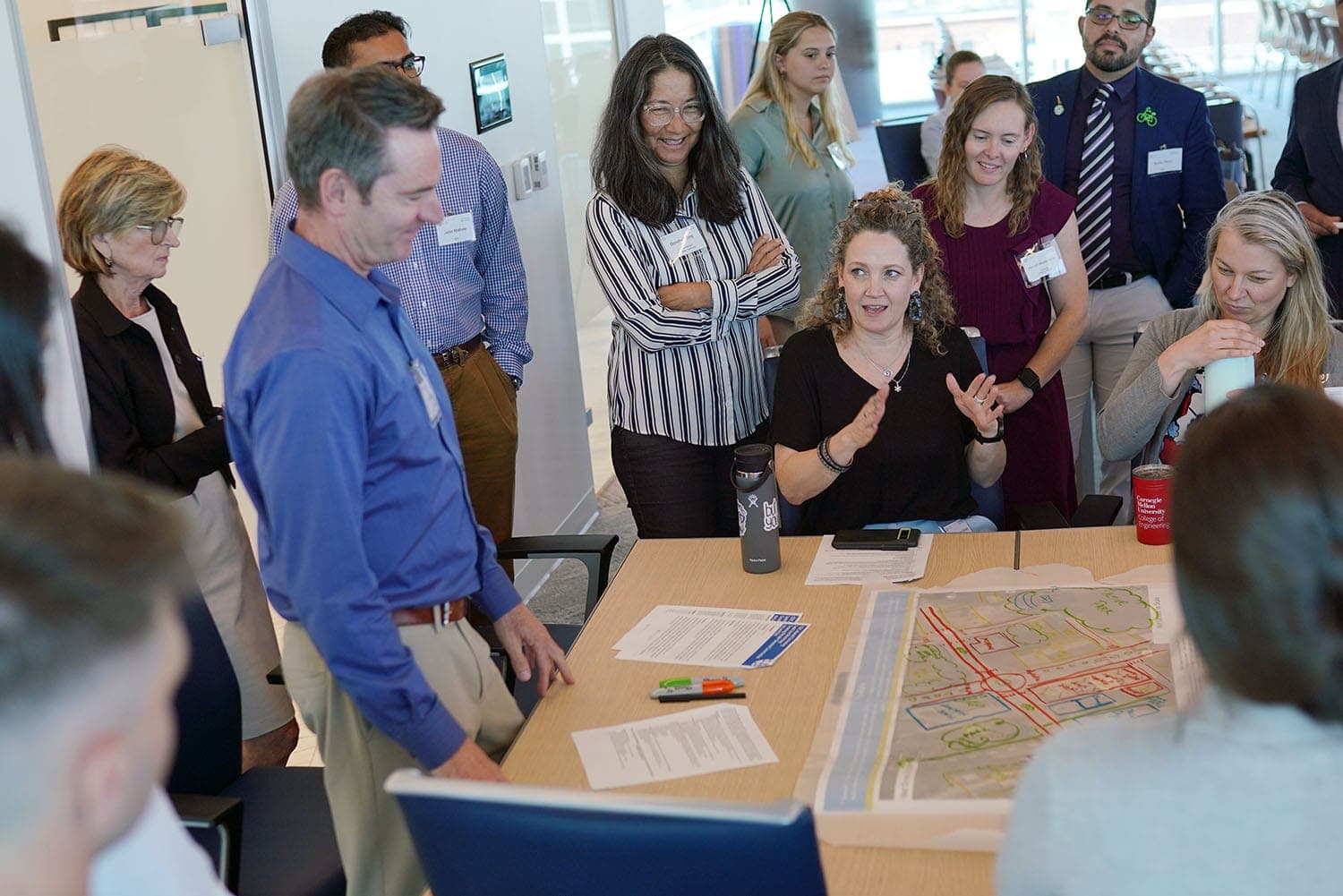
News
By Jaibin Mathew, June 5, 2024
Last month, we spent two days with Complete Streets Champion Institute alumni and community leaders to discuss strategies for implementing Complete Streets in our communities. The event served as an opportunity to connect elected officials, allowing policymakers from across the United States to build capacity, work together, and find solutions to their shared challenges with advancing healthy community design.
Day One: Reflecting on the movement
The Champions Alumni Convening assembled elected officials and local champions in Washington D.C for a two-day training that consisted of workshops and presentations centered around Complete Streets. As the group gathered, there was a palpable energy. While the group represented states from Connecticut to California and many places in between, there were quick smiles and laughter as the attendees made introductions and began speaking about the places they called home.
Smart Growth America’s President and CEO Calvin Gladney kicked off the convening, outlining the importance of smart growth and Complete Streets. He explained that Complete Streets moves the U.S. towards greater inclusivity when it comes to how we develop our communities. He said that “completing the streets indicates how much a community is valued,” describing the importance of building infrastructure with all road users in mind.
Terry O’Toole, the Chief of Program Development and Evaluation Branch of the Division of Nutrition, Physical Activity, and Obesity at the Centers for Disease Control (CDC), followed Calvin to speak on the intersection of Complete Streets and physical health. He talked about the CDC’s Active People, Healthy Nation℠ initiative, which aims to get 27 million Americans more physically active by 2027. Supporting the Implementation of evidence based strategies to increase physical activity, such as implementing complete streets policies is a key focus of this initiative.
Jeremiah Lowery, Director of Advocacy at the Washington Area Bicyclist Association, then talked about his experience working on Complete Streets projects in DC. He described the importance of relationship building over the course of time, and how that contributed to the passage of several DC bills that advance Complete Streets. Attendees then had a dialogue with Jeremiah about engagement and how he worked with groups such as police departments, local organizations, councilmembers, and public health organizations. He concluded by saying “one key word is consistency, never give up on a relationship.”
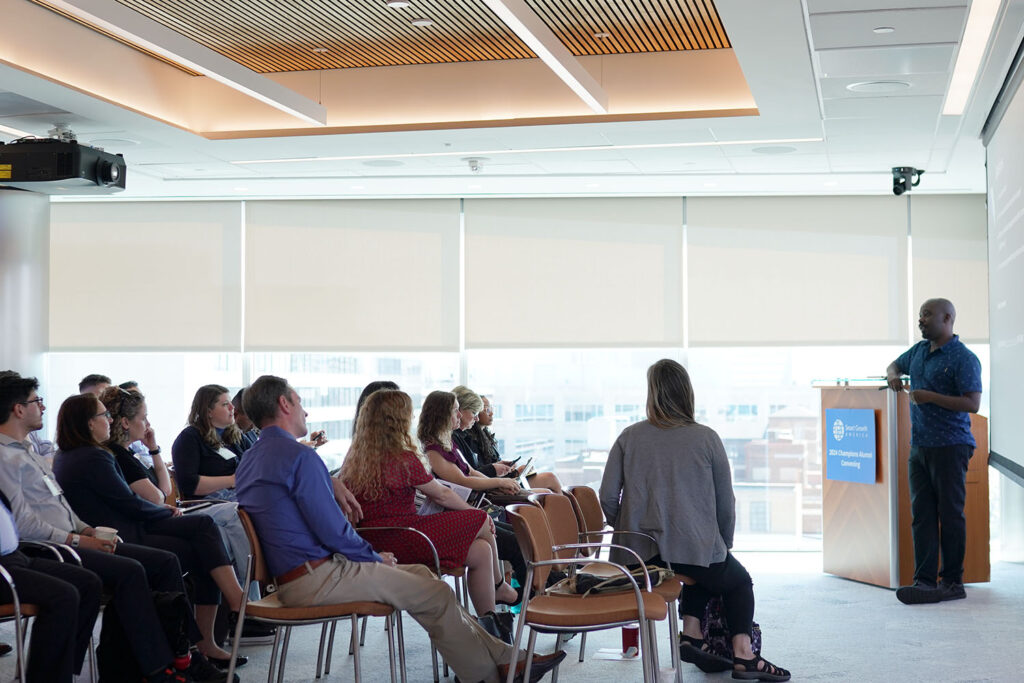
As the convening shifted to the second half of the day, the attendees split into smaller groups for brainstorming activities. Beth Osborne, Vice President of Transportation and Thriving Communities at SGA, led a visioning activity in which groups identified the current issues facing the Complete Streets movement, emerging trends, and some that are fading away. The groups wrote their ideas on post-it notes and were asked to add more throughout the convening.
Following that, Toccarra Nicole Thomas, the Director of Land Use and Development at SGA, passed out large land use maps. Groups were given background on issues affecting anonymized areas and were asked to draw solutions on transparency sheets. They had to consider the needs and priorities of community members, developers, community organization leaders, and electeds in their designs. Participants were extremely creative, and the solutions—even when talking about the same scenario—varied wildly. Transportation options ranged from the standards of walking, biking, and rolling to the wildness of ziplines and vertical taxis (helicopters).
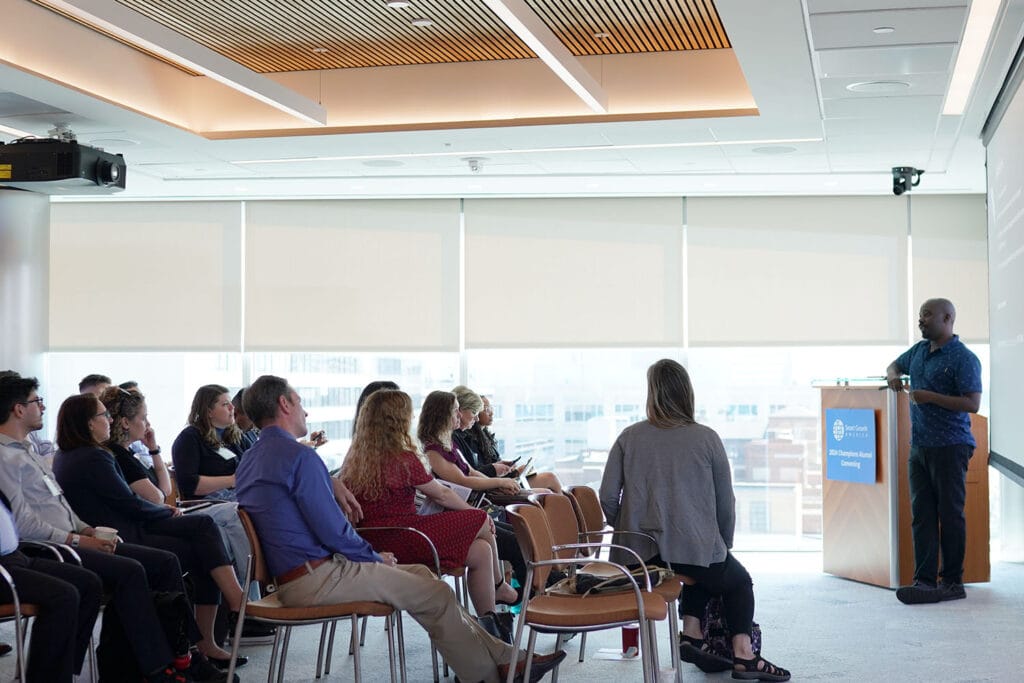
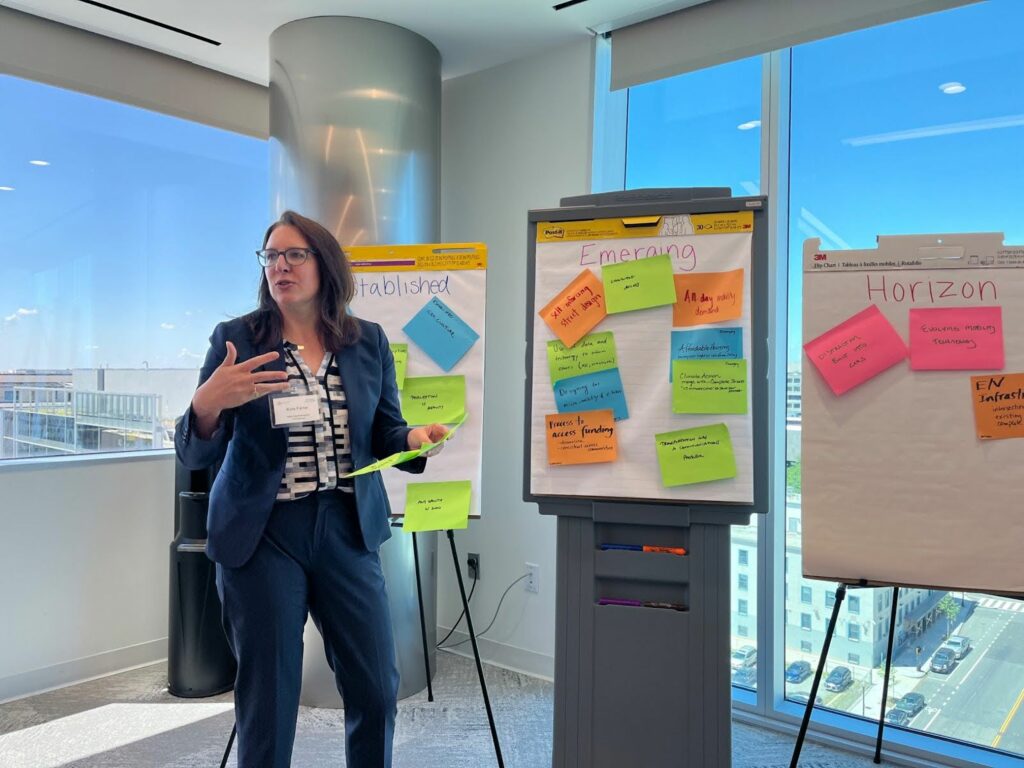
Finally, Heidi Simon, Director of Thriving Communities at SGA, and Raveena John, a Senior Program Associate with the Thriving Communities team passed out maps of intersections. Groups were tasked with proposing quick-build and demonstration projects to address problems they saw on the roads. To complicate matters further, groups had to brainstorm a community engagement plan, all within 10 minutes. What resulted was a diverse array of interventions including temporary bike lanes, bus stops, curb extensions, cross walks, and more. Groups recommended that students, the elderly, and other community members be engaged, oftentimes in nontraditional ways such as direct surveys at bus stops.
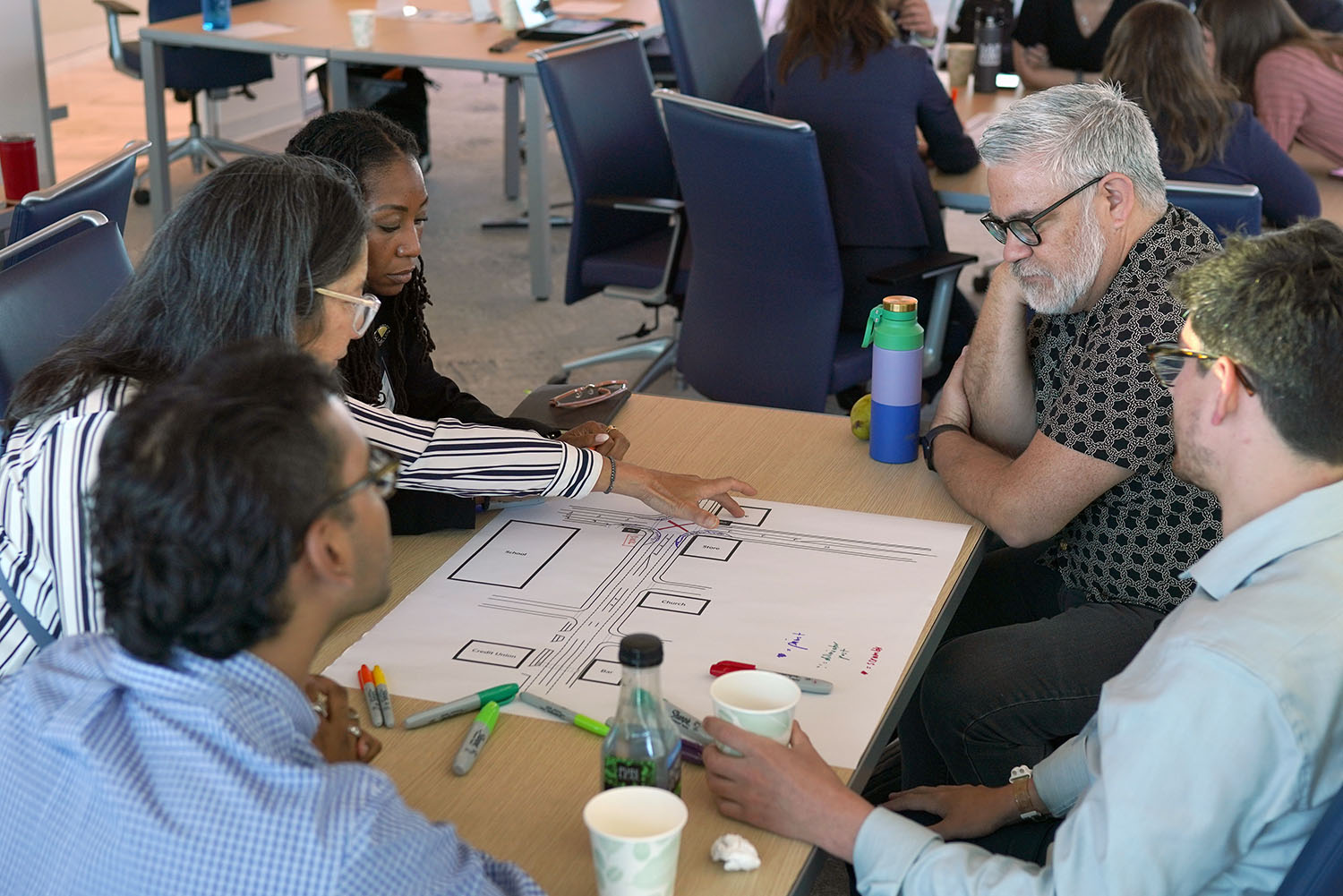
Day one concluded with a dinner with Barbara McCann, Senior Advisor to the Deputy Secretary at the US Department of Transportation and creator of the National Complete Streets Coalition. She praised the group for continuing the important work of Complete Streets.
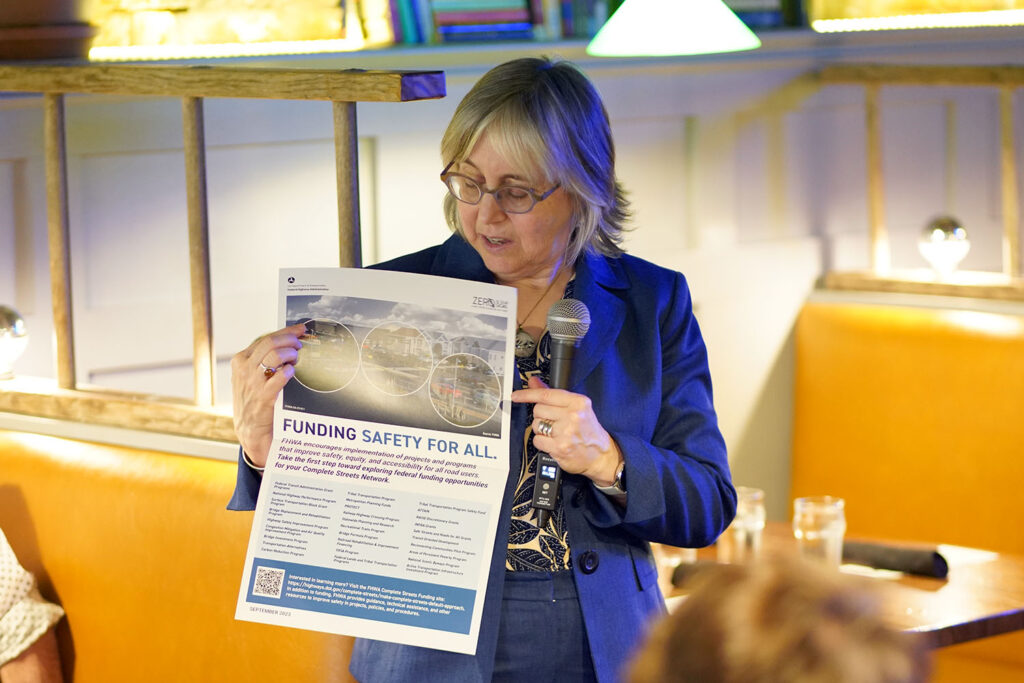
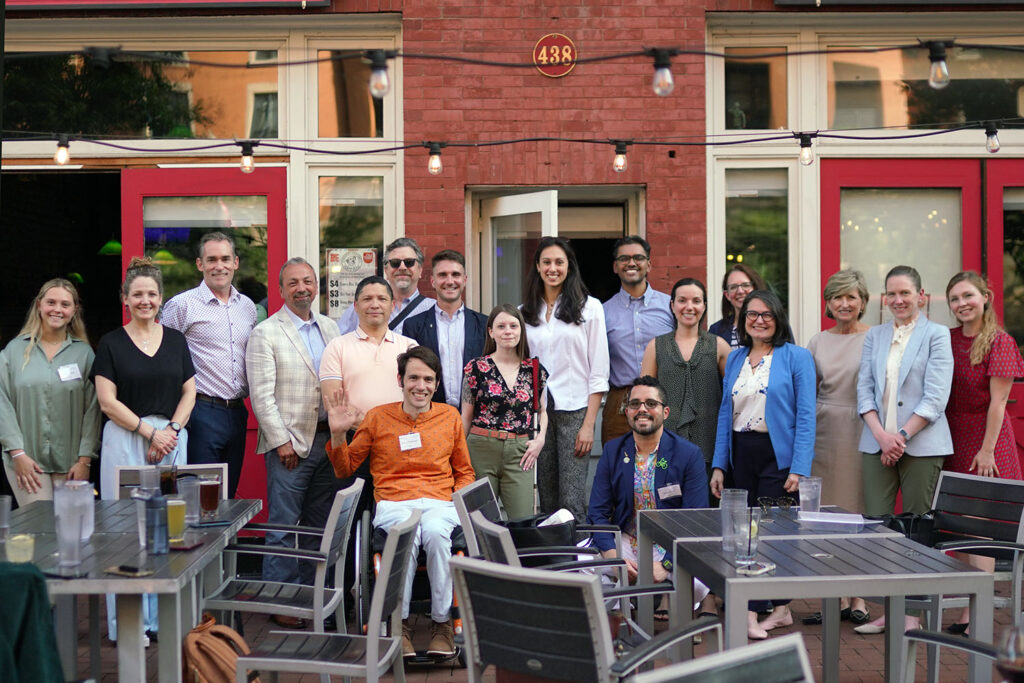
Day Two: Complete Streets in Action
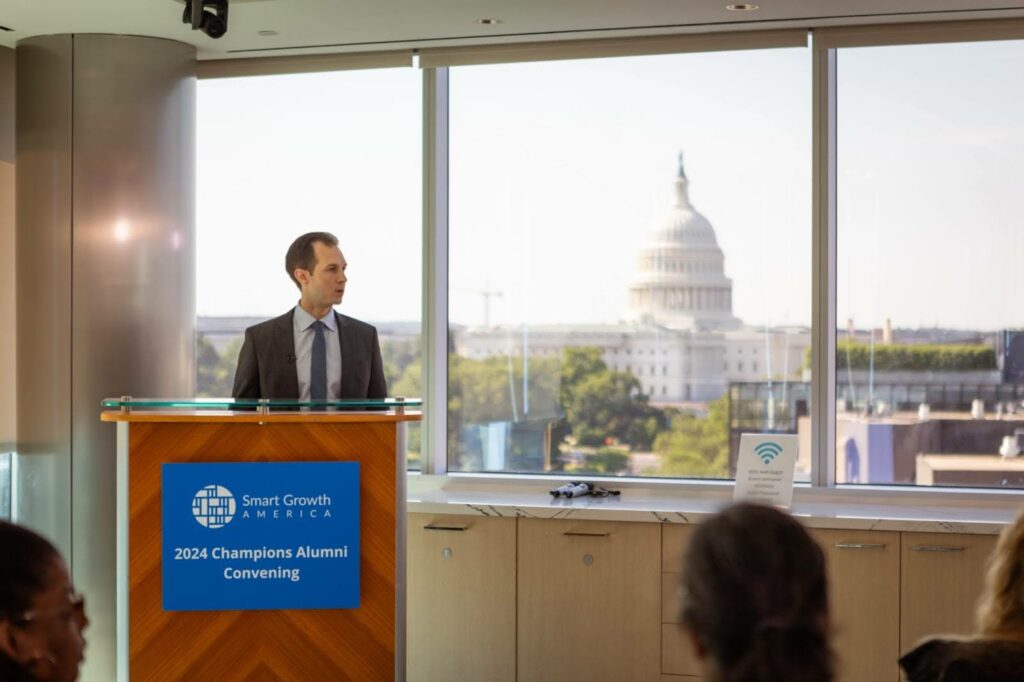 Representative Jake Auchincloss from Massachusetts’s 4th district opened the second day. He outlined how his time as a Marine, in the private sector, and in city council, informed his passion for transportation issues. He focused on parking and how the federal government is changing to help local elected officials work on the hot topic of parking. He pointed out how parking reform is a part of Complete Streets work, saying “the curb to me is the most valuable, underutilized asset in the city today.” He explained that if there are Complete Streets, people will use them. Concluding his speech, he imparted the attendees with the words that their work “takes political courage but beyond that is a legacy.”
Representative Jake Auchincloss from Massachusetts’s 4th district opened the second day. He outlined how his time as a Marine, in the private sector, and in city council, informed his passion for transportation issues. He focused on parking and how the federal government is changing to help local elected officials work on the hot topic of parking. He pointed out how parking reform is a part of Complete Streets work, saying “the curb to me is the most valuable, underutilized asset in the city today.” He explained that if there are Complete Streets, people will use them. Concluding his speech, he imparted the attendees with the words that their work “takes political courage but beyond that is a legacy.”
After his opening remarks, attendees took what they learned to the streets in DC. They split into two groups for tours led by the District Department of Transportation (DDOT). The first group walked in areas with recent Complete Street projects. They saw all the work that went into designing, approving, and building bike lanes, bus shelters, and accessibility features such as curb ramps and detectable warnings. The second group saw the constraints of working in a complex system. DDOT described how they had to balance local and federal actors, the National Park Service, and the architect of the Capitol to implement Complete Streets projects. Despite numerous stakeholders, DDOT presented their bike lanes, traffic calming measures, and future plans to complete the streets near the National Mall and other downtown areas.
To conclude the convening, attendees came back and took a second look at their post-it notes with fresh eyes. They voted on the Complete Streets items they felt best represented the established issues, emerging trends, horizon, disappearing items, and problems that dragged the movement down.
This project was made possible by cooperative agreement OT18-1802 from the Centers for Disease Control and Prevention’s Division of Nutrition, Physical Activity, and Obesity. Its contents are solely the responsibility of the authors and do not necessarily represent the official views of the CDC. We thank the speakers who shared their time and knowledge with us and to the CDC which provided support to facilitate the training components of the convening.
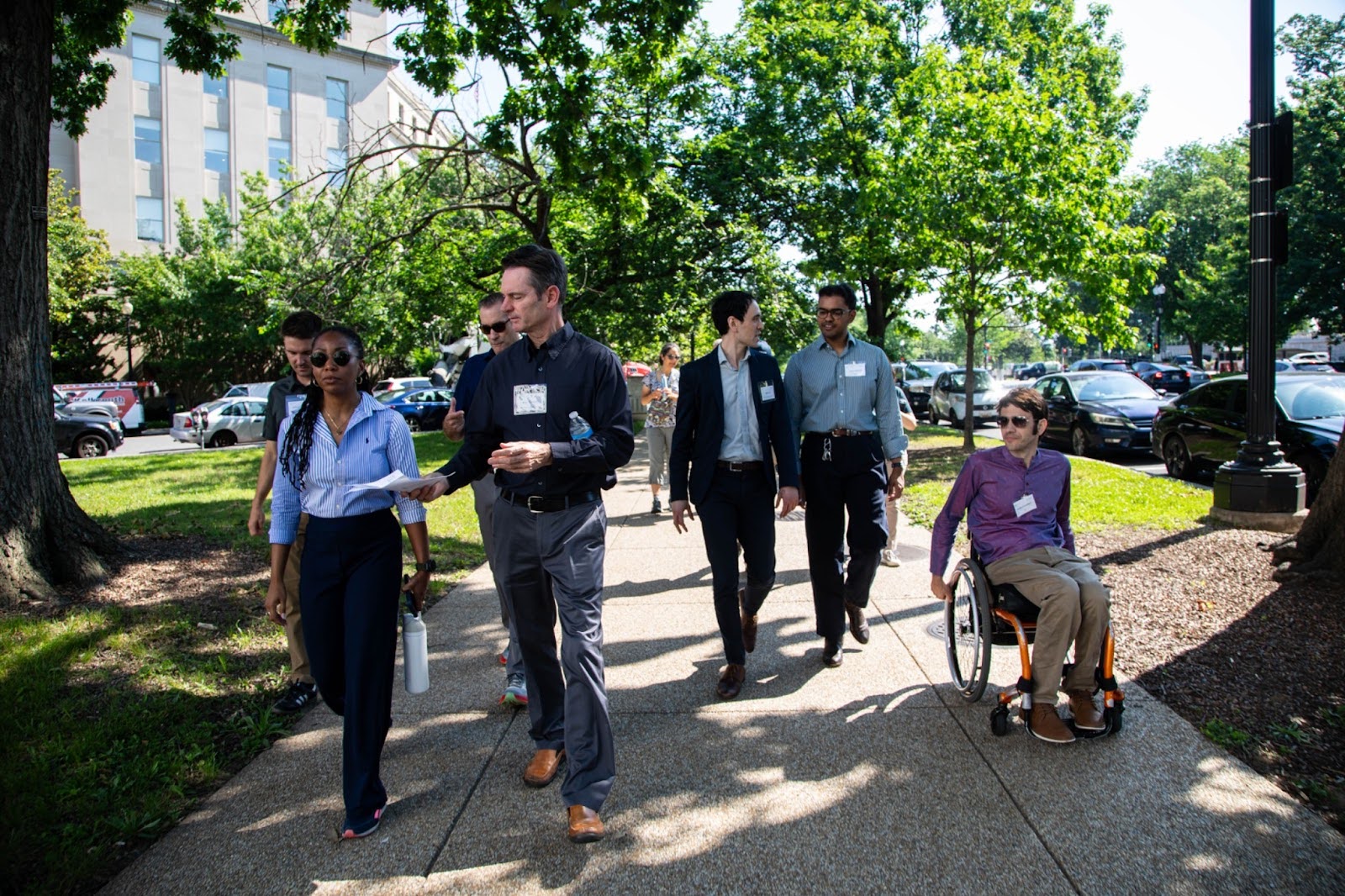
Related News

© 2025 Smart Growth America. All rights reserved
Site By3Lane Marketing
















